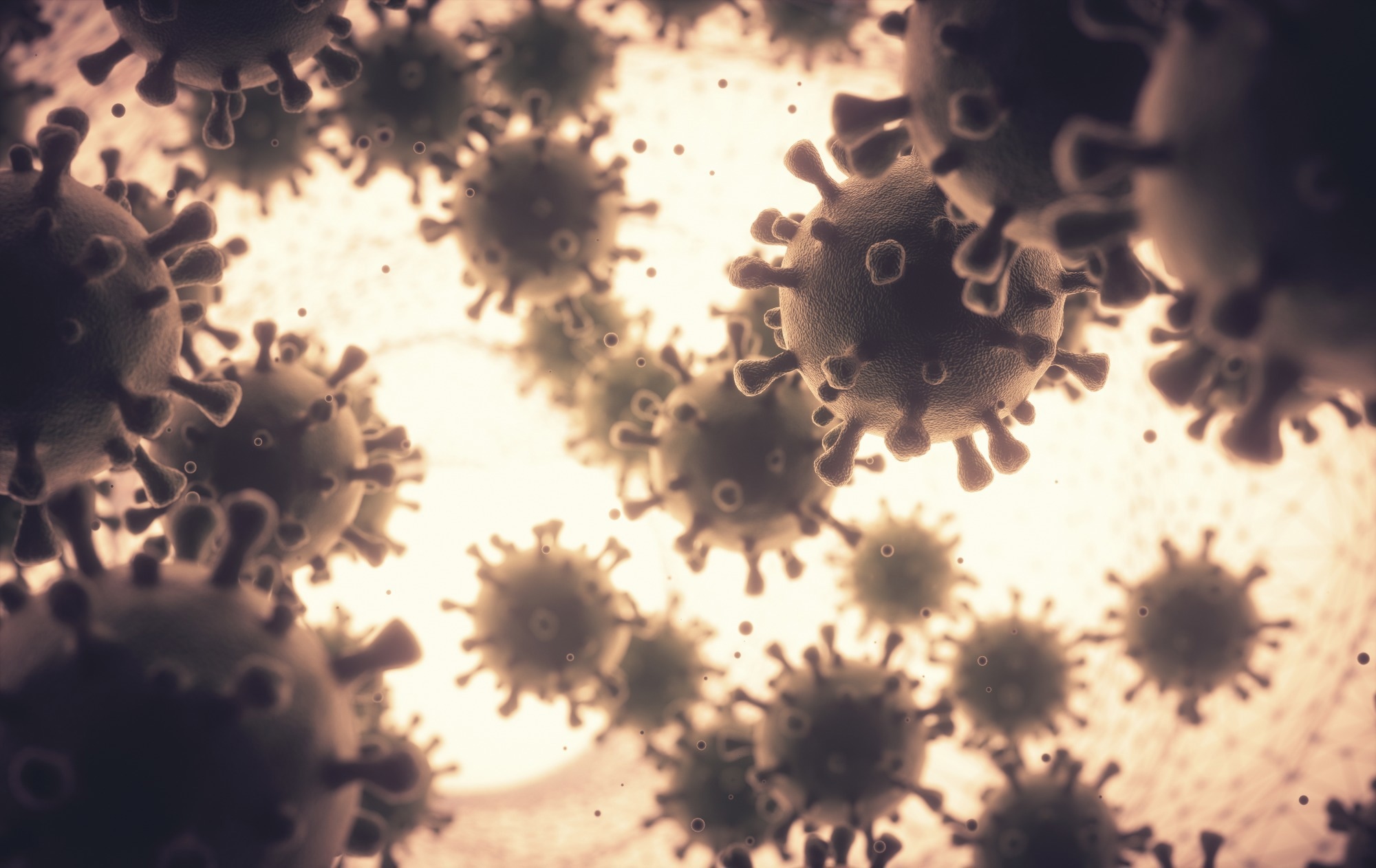In a recent study posted to the bioRxiv* server, researchers in the United Kingdom evaluated a battery-operated portable air sampler that could recover severe acute respiratory syndrome coronavirus 2 (SARS-CoV-2) aerosolized in a laboratory using a plaque assay.
 Study: An optimised method for recovery and quantification of laboratory generated SARS-CoV-2 aerosols by plaque assay. Image Credit: ktsdesign / Shutterstock
Study: An optimised method for recovery and quantification of laboratory generated SARS-CoV-2 aerosols by plaque assay. Image Credit: ktsdesign / Shutterstock

 *Important notice: bioRxiv publishes preliminary scientific reports that are not peer-reviewed and, therefore, should not be regarded as conclusive, guide clinical practice/health-related behavior, or treated as established information.
*Important notice: bioRxiv publishes preliminary scientific reports that are not peer-reviewed and, therefore, should not be regarded as conclusive, guide clinical practice/health-related behavior, or treated as established information.
Background
Researchers continue to debate the perceived risk of the aerosolization of viable SARS-CoV-2 ribonucleic acid (RNA) since its emergence in late 2019. In the absence of reliable viral isolation data, retrospective analysis of superspreading events is the only way to believe that this virus transmits through aerosols. For instance, the air in hospital rooms might have aerosolized SARS-CoV-2. However, studies have not demonstrated the recovery and quantification of aerosolized SARS-CoV-2 with infection potential.
It has remained experimentally challenging to devise a reliable method for capturing SARS-CoV-2 from the air. Cytopathic assays demonstrate the presence of infectious viruses; however, their findings are subjective. They often rely on a technician's expertise to detect changes in cell morphology due to infecting viruses. It makes plaque assays the gold standard for infectious viral quantification. The number of discrete plaques in cell culture indicates the viral titer of the inoculum in plaque assays.
About the study
In the present study, researchers first aerosolized SARS-CoV-2 (Delta variant) in a stock concentration of 1.4 x 105 plaque-forming units (PFU)/mL within a class II microbiological safety cabinet (MBSC) using a Blaustein Atomizing Modules (BLAM) atomizer.
For each study condition, they generated aerosols for four minutes at a rate of 18 liters per minute (l/min). An MD8 Airport with gelatine membranes recovered SARS-CoV-2 RNA at a rate of 30 l/minute (total 50 liters). The method relied on mechanical agitation of the membrane and the addition of chemicals.
The team tested numerous variables during the development of the study protocol. Also, they performed three biological replicates for each variable tested. In total, they performed this experiment in three phases.
In phase I, the team determined whether the experiment required passage in cells (enrichment step) before plaquing. Further, they established the optimum time to dissolve gelatine membranes. The optimum time to dissolve gelatine membranes ranged between one hour, four hours, and 24 hours. Finally, they investigated the temporary storage conditions of dissolved membranes in Dulbecco's modified Eagle's medium (DMEM) for each sample. It is the primary study variable governing the viscosity of the suspended gelatine membranes, which, in turn, affects the accurate pipetting of the suspension. The storage conditions ranged from room temperature (RT) to 4 oC and –20 oC.
In phase II, the team tested the DMEM amounts (5 mL, 10 mL, or 20 mL) needed for suspending the gelatine membrane after capturing the aerosol. They also considered the sample volume needed to infect cells (100 µL or 200 µL). In phase III, the team measured the impact of freezing gelatine membranes soon after viral recovery. It helped them assess sample processing as convenient for the lab staff.
Study findings
A single passage in cells enhanced SARS-CoV-2 recovery by the study method, although freezing membranes before suspension in culture media reduced recovery. Based on the study data, the authors recommended samples are processed immediately after collection. Unfortunately, the requirement for cell passage restricted the direct quantification of viral titers initially recovered during air sampling. Although in small volume, the study method could recover SARS-CoV-2 with cell passage before plaque assay.
Conclusions
The authors could not clarify whether the study method needed optimization for each SARS-CoV-2 variant of concern (VOC) separately. Thus, they recommended evaluating all cell techniques for novel VOCs to create a framework for optimization.
The laboratory-generated aerosols cannot replicate all particle sizes in human speech-derived aerosols. Furthermore, the BLAM used in the study also could not replicate the composition of viral aerosols generated by human exhalations. Also, human-generated aerosols vary between individuals depending on disease severity. Nevertheless, the current study findings could aid further research into SARS-CoV-2 transmission and help inform the development of sampling methods within the environment.

 *Important notice: bioRxiv publishes preliminary scientific reports that are not peer-reviewed and, therefore, should not be regarded as conclusive, guide clinical practice/health-related behavior, or treated as established information.
*Important notice: bioRxiv publishes preliminary scientific reports that are not peer-reviewed and, therefore, should not be regarded as conclusive, guide clinical practice/health-related behavior, or treated as established information.
Journal reference:
- Preliminary scientific report.
An optimised method for recovery and quantification of laboratory generated SARS-CoV-2 aerosols by plaque assay, Rachel L Byrne, Susan Gould, Thomas Edwards, Dominic Wooding, Barry Atkinson, Ginny Moore, Kieran Collings, Cedric Boisdon, Simon Maher, Giancarlo Biagini, Emily R Adams, Tom Fletcher, Shaun H Pennington, bioRxiv pre-print 2022, DOI: https://doi.org/10.1101/2022.10.31.514483, https://www.biorxiv.org/content/10.1101/2022.10.31.514483v1